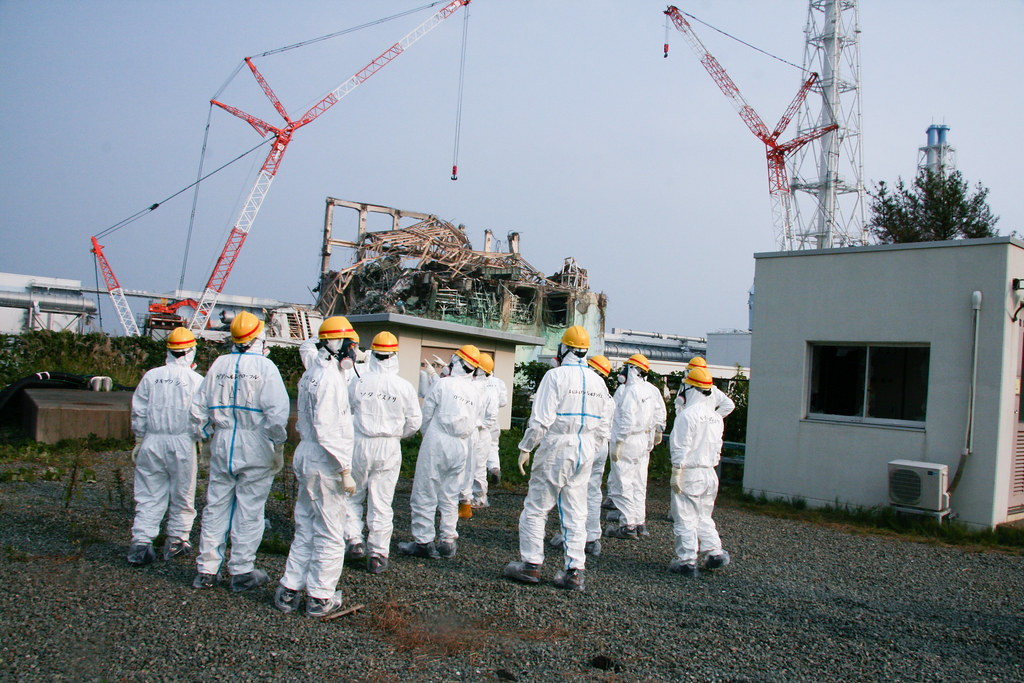Just Transition: Moving away from use of fossil fuels must not leave anyone behind
With more than 130 countries either committing to or considering a target of net zero greenhouse gas emissions by 2050, preparing for how this energy transition will affect the job market is critical.

The move to clean energy will generate more jobs than are lost with the transition away from fossil fuels and the highest paid ones will continue to be in nuclear power, which provides significant and sustainable employment benefiting local and regional economies, according to new research presented at an IAEA event.
With more than 130 countries either committing to or considering a target of net zero greenhouse gas emissions by 2050, preparing for how this energy transition will affect the job market is critical. Representatives from the clean energy industry joined a recent IAEA webinar on how rising living standards and job creation can be ensured as energy investments align to meet climate goals.
“Moving away from the use of fossil fuels must not leave anyone behind – this is the concept of a Just Transition,” Henri Paillere, Head of the IAEA Planning and Economic Studies Section, said at the webinar on “Investing in Low Carbon Technologies: Job Creation for Just Energy Transitions”. “Investing in all clean technologies is needed on a massive scale and this must be done in a way that creates jobs, economic growth and supports sustainable development.”
Investments in clean energy sources such as solar, wind and nuclear have a positive impact on gross domestic product (GDP) that is two to seven times stronger than spending on fossil sources such as gas, coal, and oil, according to an International Monetary Fund working paper. Analysis presented at the webinar by the International Renewable Energy Agency (IRENA) predicts that in a scenario where the global temperature rise is limited to 1.5° Celsius, consistent with global climate goals, jobs in the renewables sector could grow from 12 million to 38 million by 2030.
Other energy transition-related jobs – such as energy efficiency, power grids, energy system flexibility – could grow from 16 million to 74 million over the same period, said Michael Renner, Programme Officer in the Knowledge, Policy and Finance Centre at IRENA. By contrast, conventional energy jobs would decline from 39 million to 27 million.
“Clearly the raw numbers alone look quite good,” Renner said. “The transition-related jobs outweigh the job losses in fossil fuels.”
According to the IMF paper, investments in nuclear power produce the biggest economic multiplier effect of any clean energy source. Nuclear power creates about 25% more employment per unit of electricity than wind power, while workers in the nuclear industry earn one third more than those in the renewables sector, the paper showed.
Similar findings were presented by Philippe Costes, Senior Advisor at the World Nuclear Association (WNA). “Nuclear offers jobs with higher wages than any other energy technology, roughly 25-30% higher. But importantly, while nuclear provides jobs locally around the plant and in regional economies during construction similar to wind, during operation only nuclear provides significant and sustainable jobs to the local and regional economies,” Costes said at the webinar.
Research by the WNA found that nuclear power provides about 25% more employment per unit of electricity in France and in the United States than wind power, and these jobs are well paid, long term and predominately local, Costes said. The long-term economic benefits of nuclear are also reflected in the rising level of localisation for newcomer countries, he added, pointing to the example of South Korea, whose scaling up of nuclear power coincided with becoming the world’s 11th largest economy by the mid-1990s. Nuclear produces almost one third of South Korea’s electricity.
“When you look at the development of South Korea, you have a nice correlation between the nuclear industry growth and the growth of the country, as the huge reactor fleet became more and more indigenous – they developed their own infrastructure, industry and supply chain,” Costes said.
According to the International Energy Agency (IEA), around 60% of the 30 million new workers needed for clean energy, energy efficiency and low-emissions technologies by 2030 will be in new and highly skilled jobs, requiring post-secondary education such as vocational certificates or university degrees. Governments and academic institutions need to start putting in place policies now to develop this workforce of the future, said Daniel Wetzel, Head of the Tracking Sustainable Transitions Unit at the IEA’s World Energy Outlook Team.
This workforce also needs to be much more diverse, a goal that is reflected in the IAEA’s Marie Sklodowska-Curie Fellowship Programme, which aims to increase the number of women in the nuclear field. “As with the energy sector as a whole, renewables is very much a man’s world,” IRENA’s Renner said. “Our studies indicate significant barriers to women’s recruitment, retainment and advancement persist, and we argue strongly that this will only be overcome by robust, sustained policies in both the private and public sectors.”
ALSO READ
IAEA head visits Romania to discuss future of nuclear power programme
IAEA chief welcomes cold shutdown of all Zaporizhzhia nuclear plant reactor units
Japan informs IAEA about corrosion of tanks holding ALPS-treated water
IAEA raises concerns over potential safety risks at nuclear plant in Russian-controlled Ukraine
IAEA chief worried Israel could strike Iran nuclear facilities










